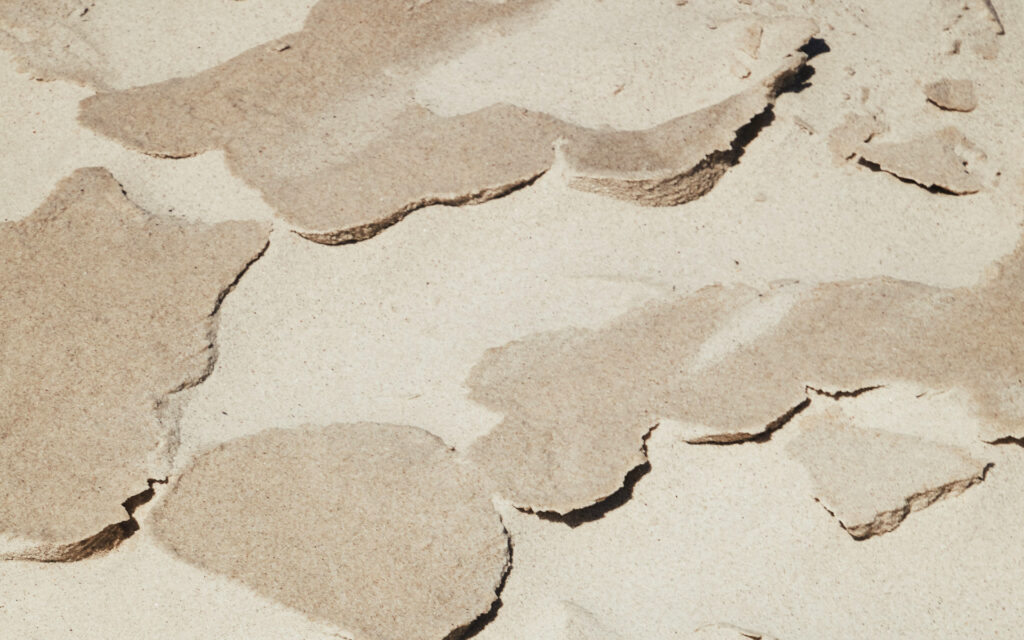Coastal erosion is a natural phenomenon that affects the coastal areas around the world. To adequately address its implications on the environment and coastal communities, it is essential to understand its causes and effects and thus become aware of environmental problems.
Andrés Osorio, director of the Center of Excellence in Marine Sciences Corporation in Colombia, explained: “Coastal erosion is a process of loss of coastal marine territory generated by human intervention, poorly planned development along the coastline, and also by natural phenomena that affect the balance of a location.” The causes of the phenomenon can be the following:

The climate and the sea
Due to global warming and glacier melting, sea levels rise, leading to flooding and erosion in low-lying coastal areas. Additionally, winds affect wave action, causing waves to consistently hit the coast, carrying sediments and eroding the coastline.
Similarly, ocean currents can transport large amounts of sediments. This can lead to the accumulation of materials in certain places and erosion in others. Thus, hurricanes, storms, and cyclones with their wave and tidal forces can cause significant erosion.
Human activities
The extraction of sand and gravel from beaches and seabeds for use in construction and industry can accelerate coastal erosion. The loss of natural sediments prevents the beach from regenerating and maintaining stability. Furthermore, deforestation of mangroves, marine mining, and construction of infrastructure near the coast can also affect the natural life of coastal areas.
In this way, deforestation and removal of coastal vegetation, such as mangroves and sand dunes, make the coast less resistant to erosion. Sand dunes halt the advance of the sea, and mangroves protect the coast from erosion. The extraction of oil and gas on offshore platforms can have negative effects on the marine ecosystem and contribute to coastal degradation.
Subsidence of land, causing gradual sinking of the soil, is another risk factor as it combines with sea level rise, causing erosion and increasing the risk of flooding. Additionally, constructions in coastal areas alter the natural flow of sediments and contribute to this phenomenon.

“Among natural conditions there may be extreme or climatic events such as El Niño or La Niña phenomena, climate change or hurricanes, which cause loss of territory. Among the anthropic ones are buildings, roads, hotel areas, ports or poorly planned structures,” highlighted Andrés Osorio.
It is crucial to mention that this phenomenon is a natural process that has occurred throughout Earth’s history. However, current human behaviors intensify it, hastening erosion in various coastal areas.
Effects of coastal erosion
And of course, like any natural phenomenon, it has its consequences. Among them, we find floods and damage to coastal properties and infrastructure, the loss of ecosystems such as mangroves and wetlands, thereby affecting local fauna and flora. There are also displacements of communities inland due to land loss and flooding.
Another effect is the economic impact since many people depend on tourism activities, and coastal erosion affects both tourist infrastructure and the reduction of fish populations, negatively impacting the economies of these regions.
Coastal erosion is impacting the beaches of the main coastal municipalities in the province of Buenos Aires, Argentina. Due to this, Federico Isla, a geologist and director of the Institute of Coastal Geology and Quaternary in Buenos Aires, lamented: “We are losing provincial heritage such as recreation areas, beaches. Lots, lands are being lost, submerged under water, beach resorts are being destroyed. Coastal avenues are being swallowed by the sea.”
Solutions to consider
On the other hand, some solutions exist to slow down erosion. Among them, protecting and regenerating corals that safeguard the coasts. Proposals include conducting awareness campaigns and monitoring the areas to prevent harmful activities on the coast.
At the same time, beach protection is also a possible solution. It is essential to conserve these spaces as they encourage tourism and act as a natural barrier against climate change. Likewise, densely populated areas, particularly susceptible to the effects of environmental problems, should apply the measure of constructing dams.
And, finally, the restoration of mangroves, since they improve biodiversity and protect the coasts from erosion because it is a natural barrier. Furthermore, by extracting firewood and serving as a fishing area, they absorb CO2 and help develop the local economy.





